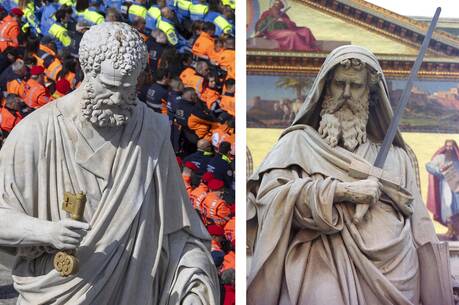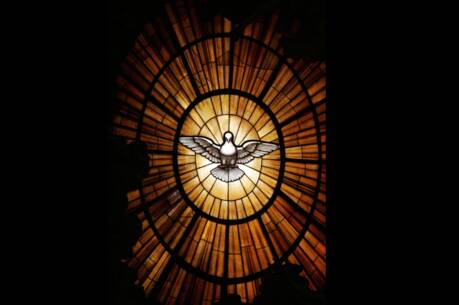The Cross, Our Identity and Hope
The cross is the central image or symbol of Christianity. It is common in churches and in other Christian institutions. Many Christians wear a cross around their neck or on their lapel as a badge that identifies them publicly as Christians. Some crosses are elaborate and expensive works of art, while others are very simple. The cross is our distinctive symbol of identity and hope.
At first glance the cross is a very peculiar symbol of identity and hope. In the Greco-Roman world in which Jesus lived and died, the cross was an instrument of great suffering and shame. Under the Romans, crucifixion was regarded as a terrible punishment visited upon rebels and slaves. One ancient writer called it the “cruelest punishment.” It was a public event, meant to deter possible troublemakers from rebellion or criminal behavior. For people in Jesus’ time and place, crucifixion symbolized terror and shame, not identity and hope.
Peter’s immediate reaction to Jesus’ prophecy of his passion and death (“God forbid, Lord! No such thing shall ever happen to you”) reflects the horror with which crucifixion was regarded then. Peter had to learn that God’s way is not always our way, that in Jesus’ case (and sometimes in our case too) the way of the cross is God’s way and that the cross can be an image of identity and hope.
The startling transformation of the cross as a symbol came about through Jesus’ death and resurrection. We must remember always that the passion predictions in the Gospels are also resurrection predictions: each one ends with a mention of Jesus’ resurrection. Nevertheless, without the cross there would be no resurrection. The cross as the central Christian symbol takes in the entire paschal mystery and issues in the resurrection and exaltation of Jesus.
Jesus invites Peter (and us) into the paradoxical mystery of the cross. By plunging ourselves into Jesus’ death and resurrection through baptism, we find new life and freedom from the false masters who seek to rule over us and keep us enslaved. By taking up the cross along with Jesus, we too can conquer death and live in the kingdom of God. In this context the cross is the supreme symbol of Christian hope, because it points us forward to eternal life with God.
In Romans 12, as Paul introduces the “ethical” part of his letter, he sketches what the cross as the sign of Christian identity and hope should mean in the present. Paul first describes everyday Christian life as “a living sacrifice” and as “spiritual worship.” Using the language of material sacrifices present everywhere in the Greco-Roman world, Paul challenges Christians to make themselves living sacrifices and turn their entire life into an act of worship. Then he urges us to live in accord with the new identity we have received in baptism and to discern and carry out whatever is good, pleasing and perfect before God.
This article also appeared in print, under the headline “The Cross, Our Identity and Hope,” in the August 18, 2008, issue.








